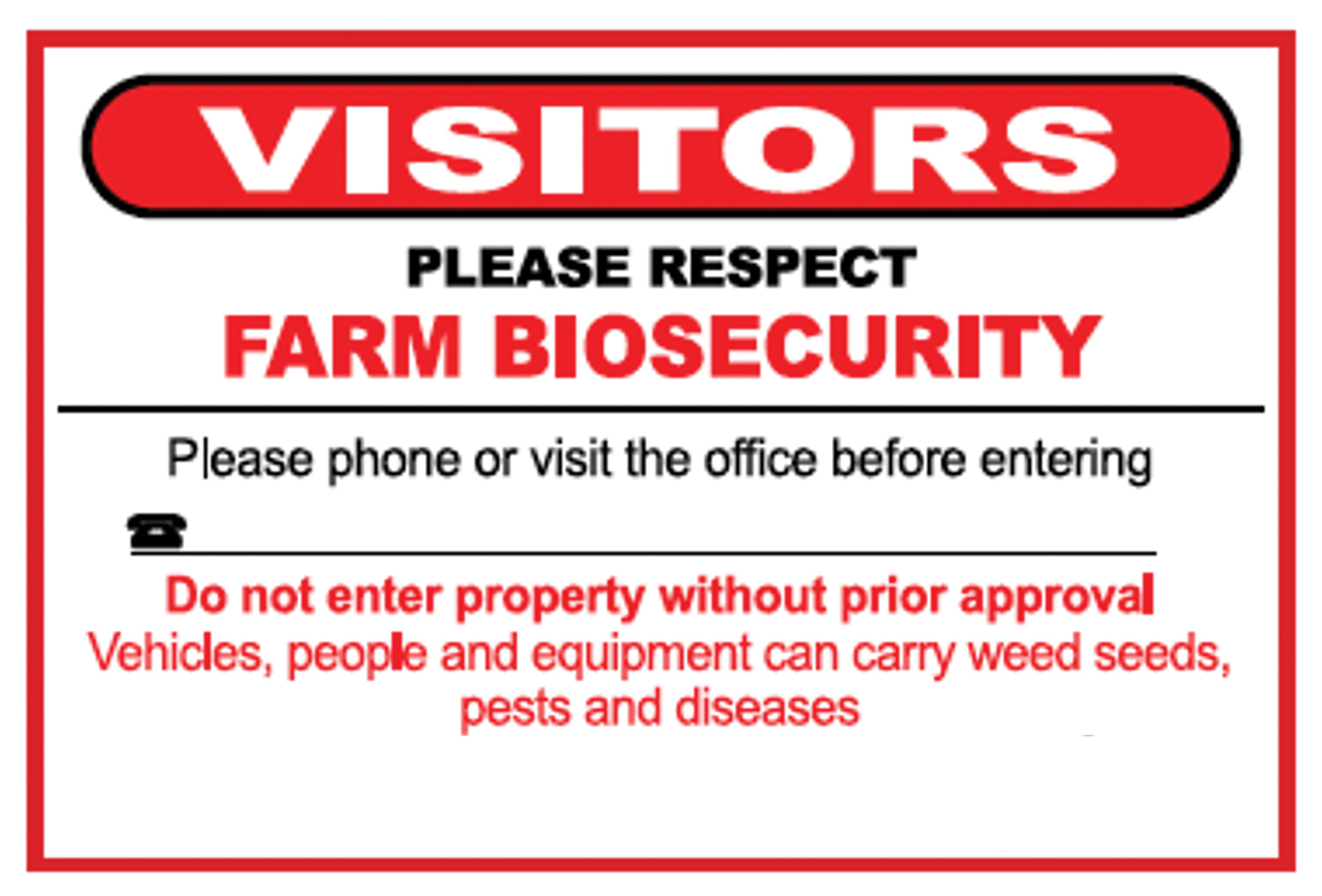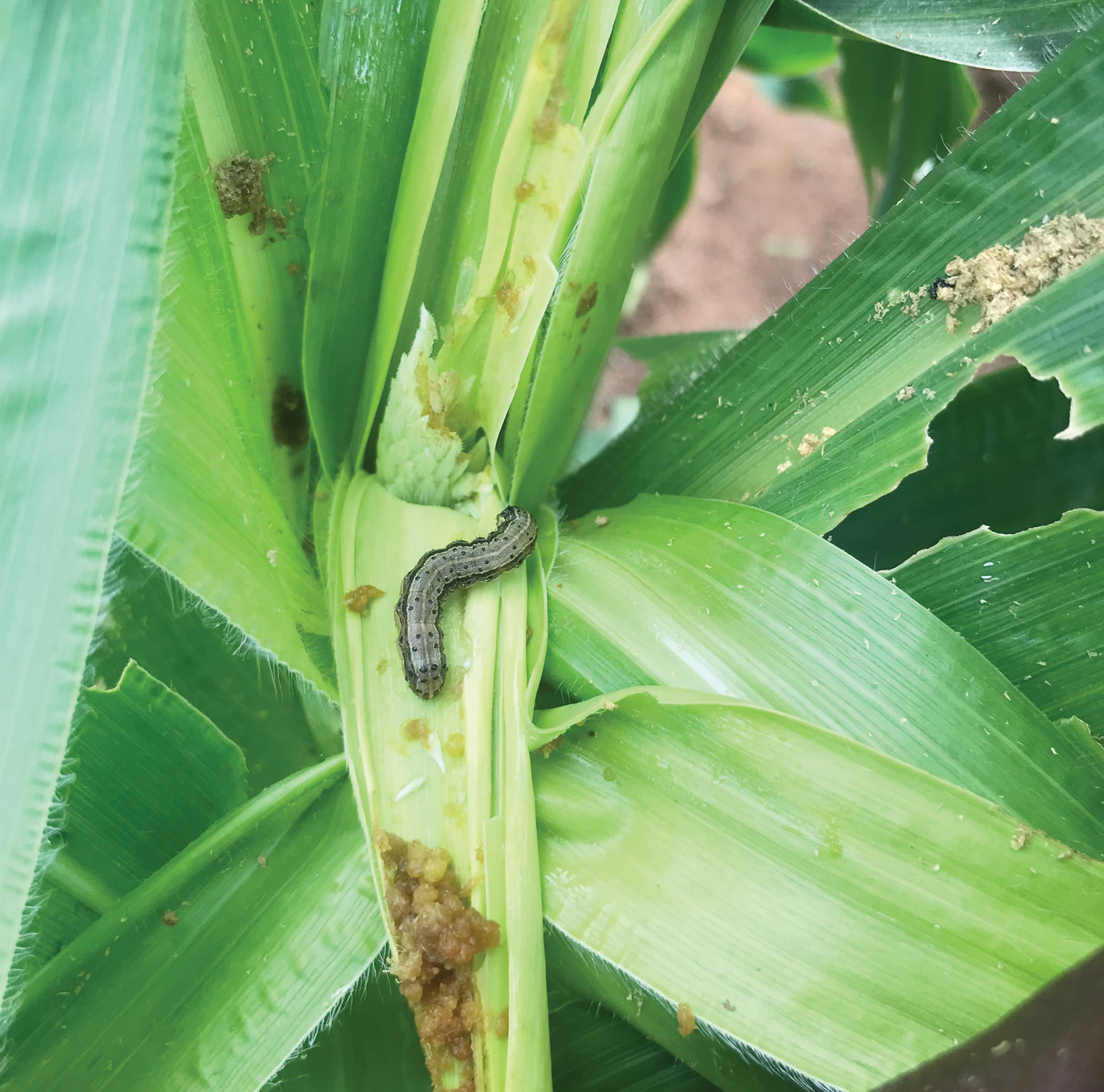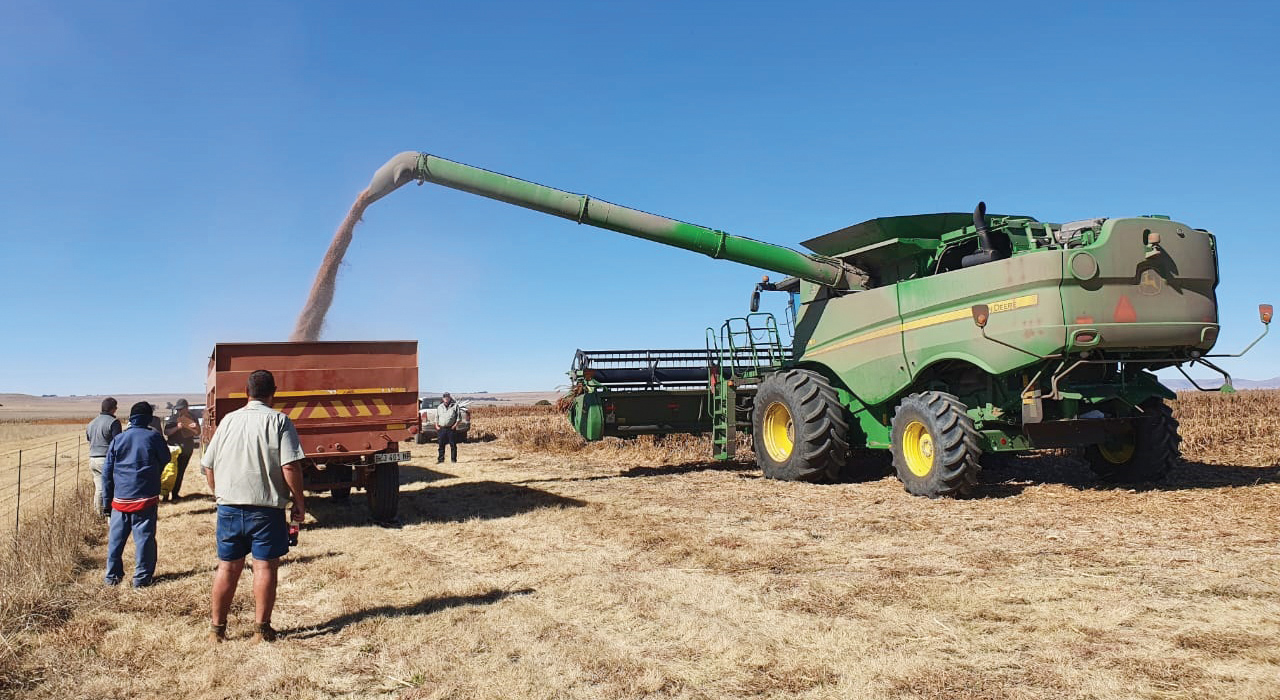August 2025
|
DR LAVINIA KISTEN, RESEARCH COORDINATOR, AND MLIBO QOTOYI, AGRICULTURAL ECONOMIST INTERN, |
 |
EVERY DAY, FARMERS WORK HARD TO PROTECT THEIR CROPS FROM THREATS THEY CAN SEE – DROUGHT, PESTS, DISEASES, WEEDS. BUT SOME OF THE BIGGEST RISKS ARE THE ONES THAT ARRIVE QUIETLY, OFTEN UNNOTICED, UNTIL THE DAMAGE IS DONE.
On-farm biosecurity is about staying one step ahead by putting simple, smart measures in place to stop pests, diseases, and weeds from getting a foothold. In South Africa, where our farms feed communities and support vital export markets, strong biosecurity is not just good practice – it’s good business. By taking action on your farm, you’re not only protecting your own future, but also helping to secure the future of South African agriculture.

Figure 1: An example of a farm biosecurity sign.
Source: Adapted from the Australian Biosecurity Manual for Grain Producers
KEEPING A CLOSE EYE: CROP MONITORING AND EARLY ACTION
Good biosecurity starts with knowing what’s happening in your fields. Regular crop monitoring is one of the simplest but most powerful tools a producer has. By walking systematically and regularly through your fields, keeping an eye out for pests, diseases, and unusual symptoms, you give yourself the best chance to catch a problem early before it spreads, affects your yields, or harms your business.
Make sure someone – whether it’s you, a worker, or an agronomist – checks your crops regularly, especially in high-risk areas like field edges, public roads, flood-prone zones, and gateways. These are likely entry points for pests and diseases. Also, remember the ‘green bridge’ – weeds and leftover crops between seasons that can host pests – should be removed or treated.
When you monitor, record what you see. Keep clear notes and photos of pest sightings, symptoms, and crop conditions. These records are not only useful for your own management decisions but also help the wider industry maintain market access by proving pests are being looked for and found absent.
If you spot something unusual, especially in a variety that’s meant to be resistant, don’t wait. Quick action can make all the difference. Contact the Grain SA research team or the Diagnostic Clinic at FABI (see contact details at the end of the article). You can also contact your local extension officer, agronomist, or crop advisor for support.
If the issue is unfamiliar or uncertain, reporting it to Grain SA or FABI is especially important to ensure accurate identification and coordinated response. In the meantime, mark the affected area, restrict access, and avoid moving any plant material. Clean hands, clothes, footwear, and equipment after being in contact with the area.
Being alert, taking early action, and reporting strange symptoms are not just about protecting your farm, but about protecting your neighbours, your region, and South Africa’s grain industry as a whole.

By monitoring your maize crop regularly, you will notice pests like fall armyworm in time.
KEEPING IT CLEAN: MANAGING PEOPLE, VEHICLES AND EQUIPMENT MOVEMENT ON YOUR FARM
Stakeholders such as inspectors, field agents, or contractors and machinery such as tractors, planters, and combine harvesters are essential for crop production. However, their movement is a primary pathway for the spread of pests (e.g., insects or nematodes), diseases (e.g., fungal pathogens like Fusarium and Sclerotinia) and weed seeds.
This risk is amplified where contractors and shared equipment often service multiple producers across diverse farming regions. A well-defined, practical protocol for cleaning and managing movement is therefore not just recommended, it is a cornerstone of effective on-farm biosecurity.
Here are some tips for effective cleaning:
Set expectations at the farm gate: Visitors should check in on arrival and be made aware of any access restrictions. Signage at entry points and production zones reinforces your biosecurity measures. Encourage the use of clean clothes and footwear and provide options like footbaths or disposable boot covers when entering crop or storage areas.
Consider higher-risk visitors: Agri-advisors, inspectors, contractors, and others who visit multiple farms are more likely to carry contamination. Ask them to clean vehicles and equipment before arriving and provide a quick biosecurity briefing when they enter. Sampling must always follow proper hygiene practices to avoid spreading pests between sites.
Limit and log movement: Keep visitor movement to a minimum, particularly around crop or storage areas. Maintain a visitor register with names, dates, and points of contact. This helps trace movements quickly if an incursion occurs. Use designated parking areas to keep production zones protected.
Keep staff in the loop: Everyone working on the farm should be aware of potential biosecurity risks and the appropriate protocol and know how to report anything unusual. If you’re hosting a field day or demo, be especially vigilant and inspect key areas afterwards for signs of new pests.

Come clean, go clean: Adopt this as a farm policy for all vehicles and equipment.
Key principles for vehicle and equipment biosecurity
PREVENTING CONTAMINATION AND DISEASE SPREAD
Managing contamination risks requires attention at every stage of production, from seed selection to storage and livestock practices.
1. Source-certified seed
Always buy certified, traceable seed from reputable suppliers. Certified seed comes with documentation verifying purity, germination rate, and absence of weed seeds or diseases. Keep records of certification and seed origin to support traceability and market access if issues arise.
2. Maintain stored seed and grain hygiene
On-farm storage is increasingly common but comes with biosecurity risks. To minimise pest infestations, the following should be done:
3. Buy clean feed and isolate new stock
Grain, fodder, and livestock can all bring in unwanted pests or weed seeds.
BASIC VEHICLE BIOSECURITY KIT
GET ADVICE HERE
Contact the Grain SA research team to get in touch with the research community for advice or diagnostic services:
Alternatively, please contact the Diagnostic Clinic at FABI (012 420 3939, diagnostic.clinic@fabi.up.ac.za).
Publication: August 2025
Section: Pula/Imvula